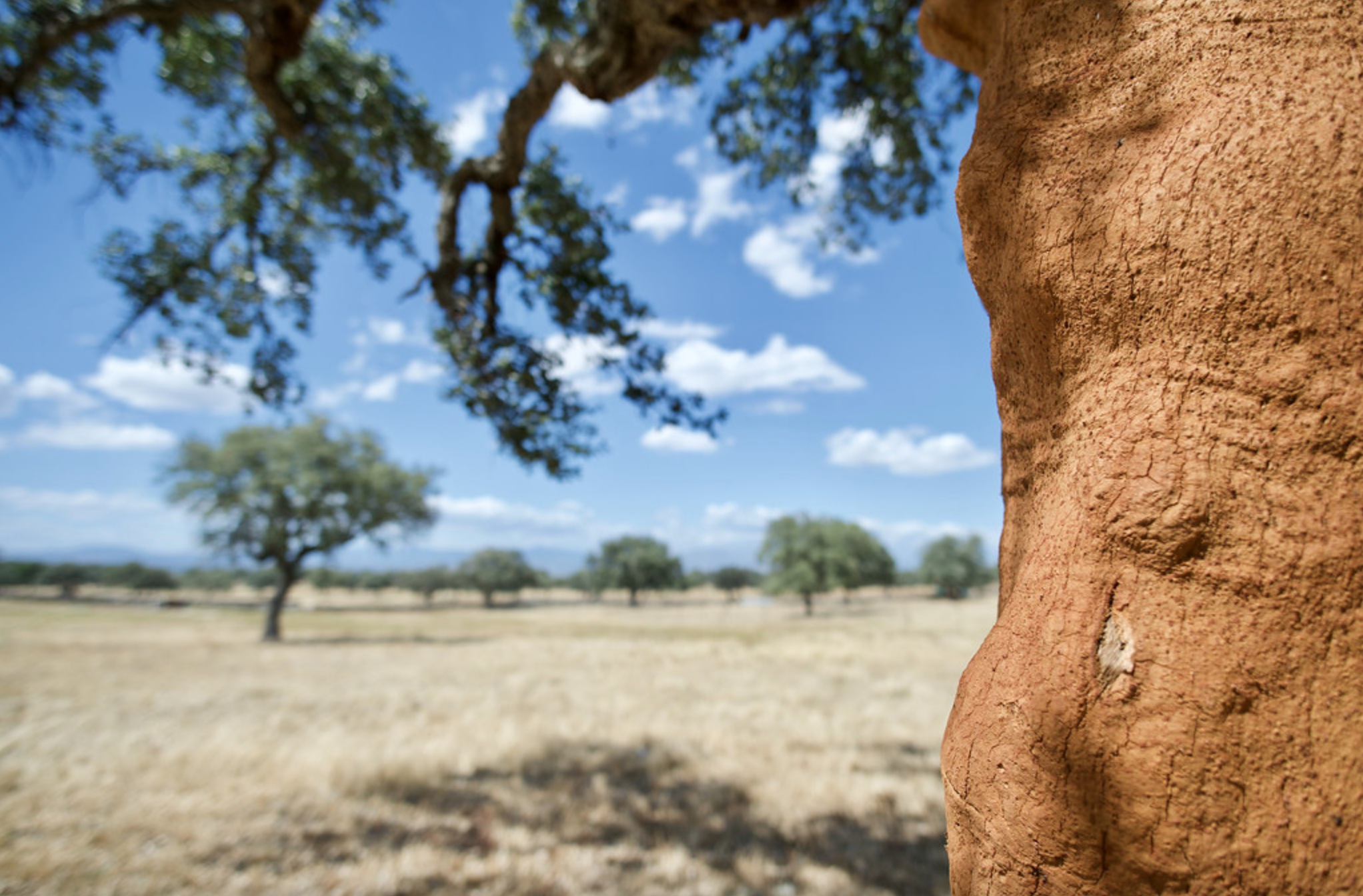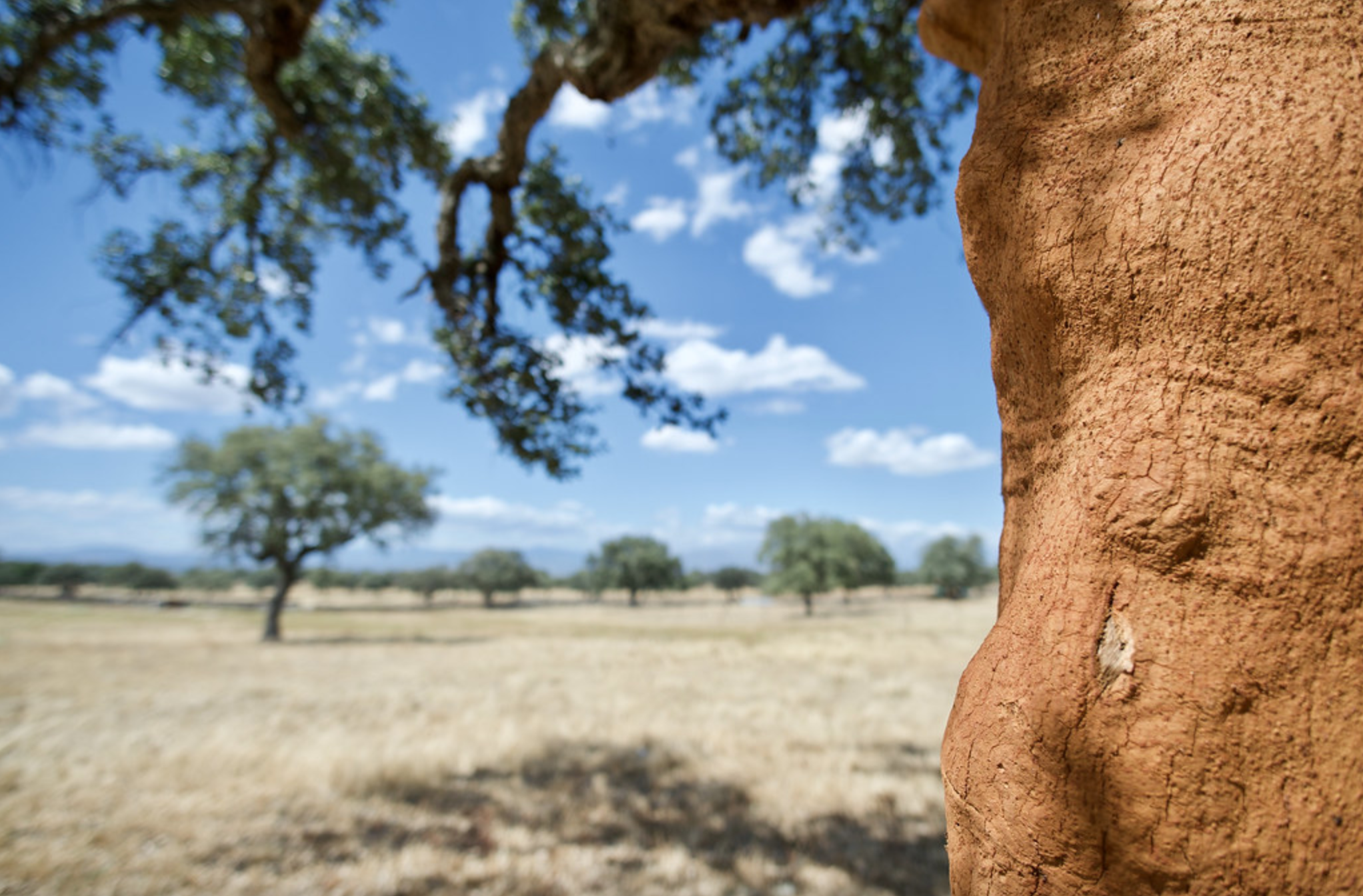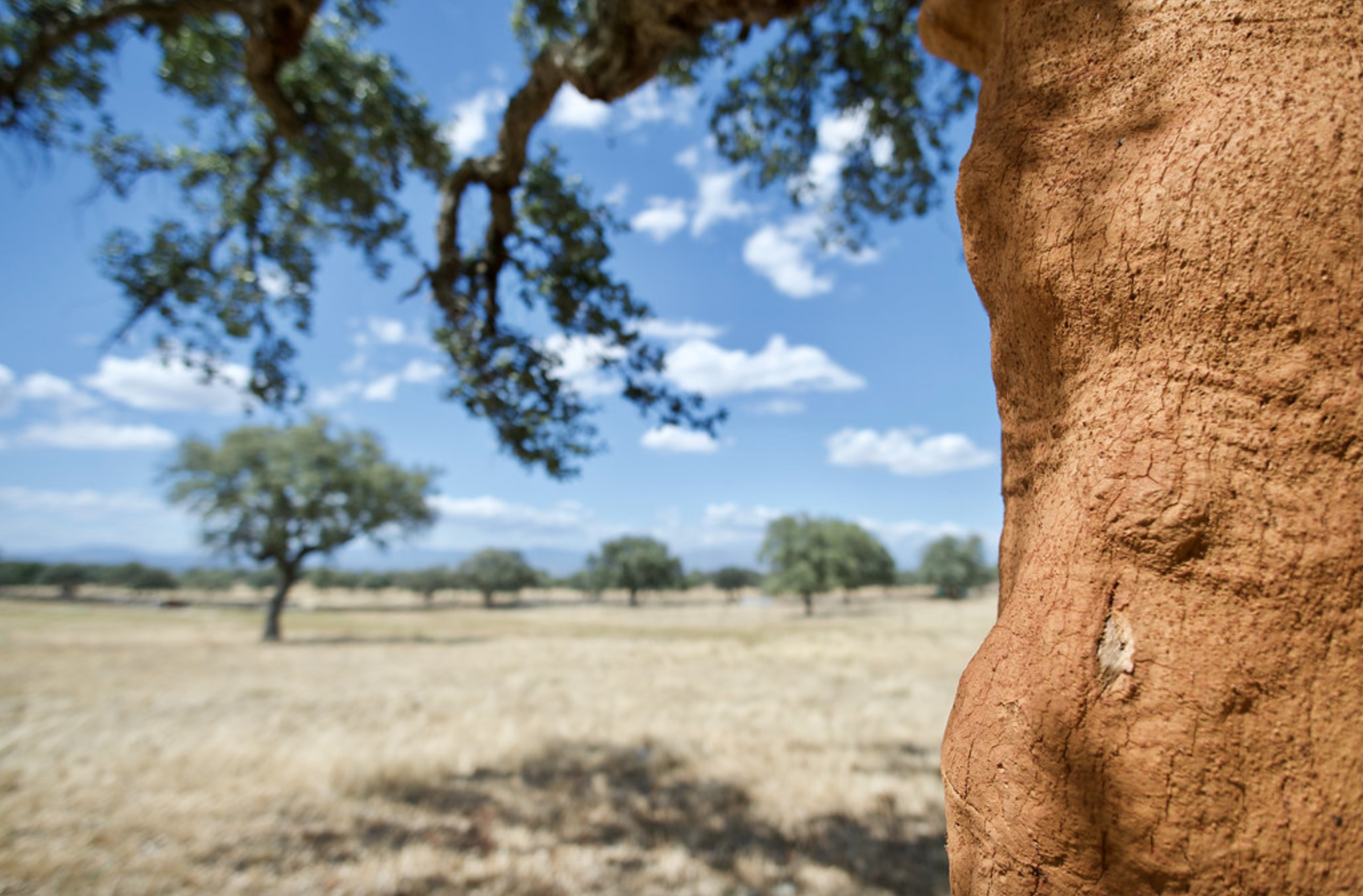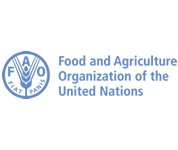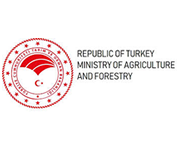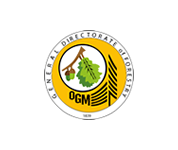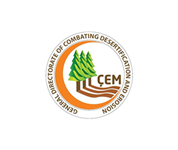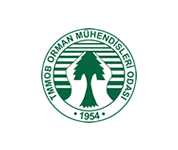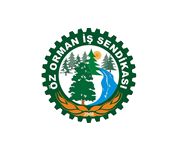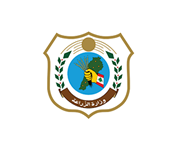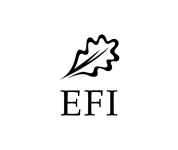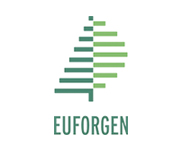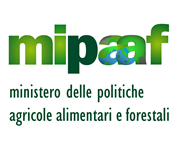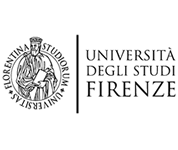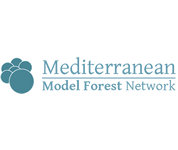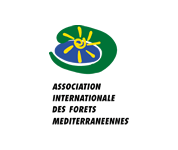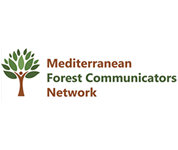Mediterranean youth poster session
Posters of young professionals, researchers and students in the forest sector in the Mediterranean region.
The posters are displayed here.
Posters des jeunes professionnels, chercheurs et étudiants du secteur forestier de la région Méditerranéenne.
Les posters sont affichés ci-dessous.
Identifying biodiversity-related success factors of ecological restoration projects
Rhea Kahale - Saint-Joseph University & Jouzour Loubnan Association - Lebanon
Abstract:
Ecosystem degradation leads to habitat loss which is one of the most important cause of species extinction. Our study focuses on determining biodiversity-related success factors in ecological restoration of high-altitude forests in Lebanon. The region of Kfardebian is located in the Mount Lebanon range at an altitude of 2000 m known. The area was subject to a grazing disturbance over the past decades that has altered its species composition and soil depletion. Our project aims to decipher the relationship among foundation species, associated organisms and their genotypes as well as the implications of such relationships in a successful establishment of diverse and viable tree populations.
Among numerous factors contributing to the success of ecological restoration, we will present here the effect of fencing on the biodiversity of a restored site and the effect of animal wildlife on the long-term sustainability of the site. A floral diversity comparison between the fenced and non-fenced area shows a higher number and new plant species in the fenced area. The size of the fenced area and the approach of global or individual fencing will be presented. The successional ecological stages are also considered as to avoid early plantation for species requiring shade or a rich soil. In this regard, cedars and junipers were introduced first taking while using the spiny shrubs that are still present in the area as nurse plants. Furthermore, plants having their seeds transported by the wind normally colonize the sites without human assistance while others are dispersed by animals. In fact, the animal component in the ecological restoration projects is very often overlooked, even though the role of animals acting as pollinators or seeds dispersers is obvious. The self-sustainability of the restored ecosystem relies deeply on animals. Who are these animals? Are they still present in the surroundings of the restored area? Did their site frequentation and population increase after the restoration project? Subsequently, with the powerful technique of DNA metabarcoding, we have unravelled the genetic information hidden in the animal scats. The use of non-invasive sampling method combined with genetic analysis of scats proved to be a powerful tool for species detection. Indeed, the information needed to study the diets of animals can be found hidden in their scat which contains not only the animal’s DNA, but also the species it has consumed. The DNA sequences obtained from such material are identified by comparison to a reference library of animals and plants of the Eastern Mediterranean countries. A total of 18 vertebrate species were recorded and information about their diet were obtained. Many of these animal species are endemic for the region and/or threatened especially in Lebanon. This work helped us assess species richness and therefore apply direct conservation and management strategies toward ecosystem of interest.
Key words: ecological restoration, Diet analysis, DNA metabarcoding, success factors, animal component, plant facilitation, ecosystem based solution
Truffles, a natural product for the rehabilitation of degraded land and sustainable territorial development.
Soukaina Hakkou - Faculté des lettres et des sciences humaines de Rabat - Morocco
⇒Display
Abstract :
In Morocco, land degradation continues to worsen. The factors are both human and natural. The valorization of natural products, such as truffles, can help to relieve the pressure on these natural ecosystems and to rehabilitate them. This work aims to show the environmental and socio-economic importance of truffles, to study the possibilities of rehabilitating degraded forest and pastoral lands through their valorization and cultivation.
The methodology was based on a documentary analysis, field surveys, and workshops in the truffle regions of Oriental, Maâmora, Sahel Doukkala-Abda and Moroccan Sahara. For the truffle cultivation, we diagnosed the 3 unique black truffle production farms under holm oak planted in Debdou and Imouzzer Kandar belonging to Dr. Laqbaqbi.
In Morocco, a dozen species of truffles exist. From an environmental point, they promote the development of the host plants and help to reduce the pressure on the rangelands during the production seasons. Socioeconomically, their collection is an important source of income, especially for women. Their share in the overall income of collectors varies from 2 to 3 times that of other activities. Truffle cultivation allow to replant fragile spaces with a local species more adapted to climate change (holm oak) and ensure a more stable income for the farmer than that of fruit trees, 300 to 400 thousand dh/ha/year.
The valorization of truffles by the organization of the sector and truffle cultivation can contribute to rehabilitate degraded areas by improving the income of the populations and reforestation by a truffle tree, adapted to ecological conditions.
Key words : Truffles, Truffle cultivation, Rehabilitation of natural areas, rural development.
La liste rouge des écosystèmes pour la sauvegarde des forêts tunisiennes
Hélène Willem - Union Internationale de Conservation de la Nature- Centre de Coopération pour la Méditerranée (UICN-Med) - Spain
⇒Display
Résumé
Depuis 2014, l’UICN évalue l’état de conservation des écosystèmes dans le monde grâce à la Liste rouge des écosystèmes (LRE). Sur base de 5 critères scientifiques, chacun doté de seuils quantitatifs, cette méthodologie permet de calculer l’impact des modifications de la composition des écosystèmes et de leurs processus clefs, et d’identifier ceux qui présentent la plus forte probabilité de disparaître.
En 2019, la LRE a été appliquée pour l’évaluation de 6 écosystèmes forestiers en Tunisie par une expertise collective d’acteurs de la recherche, de la Direction Générale des Forêts (DEF) et de l’UICN-Med. Cette étude a notamment permis de classer En Danger d’extinction l’écosystème de la subéraie en Tunisie, en raison des changements estimés dans la richesse et composition du peuplement. Les écosystèmes méditerranéens des steppes Alfa et des tourbières ont été évalués En Danger Critique, le niveaux le plus élevé de menace. Ce risque est d’autant plus marqué non seulement par la distribution restreinte de ces écosystèmes en Tunisie, mais également par la fréquences des épisodes de sécheresse. L’écosystème du Pin d’Alep a été reconnu comme Préoccupation mineure ce qui correspond à son statut d’écosystème forestier le plus répandu en Tunisie.
Cette étude a permis à la DEF de déterminer quelles forêts présentent le plus haut risque d´effondrement, et pourquoi. Sur base de ces résultats, les administrations nationales et locales peuvent intégrer une approche de gestion des risques liés aux écosystèmes forestiers, par le biais de la législation, de l’aménagement du territoire, et notamment de Solutions Fondées sur la Nature.
Mots clés : Ecosystèmes forestiers méditerranéens, gestion des menaces, outils de conservation, risque d’effondrement
Evaluation of Antalya Kepez urban forest and its environment in the framework of urban expansion models
Sıla Balta - Akdeniz University - Turkey
⇒Display
Abstract
The interaction between humans and the natural environment, which has increased with the spread of cities, has increased the damage to the natural environment. As a result of the misuse of land during the spreading process, important habitats such as fertile agricultural lands, wetlands and forest areas have begun to transform into uses such as settlements, roads and industries. While forests are included in non-urban areas in terms of land cover, they have remained in different urban-rural regions and tended to be included in a new model. Here, forest areas are seen as important as they are the regions that determine the progress of the city, but if the right protection and management decisions are not taken, the city begins to take place in the rural areas. In the study, it was provided to reveal the change faced by Antalya Kepez Urban Forest and its surroundings as a result of the transformation of urban sprawl models over time and the emergence of new intermediate models between urban-rural-natural areas. In this context, it has been seen that Antalya Kepez Urban Forest is a natural area between the city and the countryside, resulting in the character of the intermediate models that emerged as a result of urban sprawl in a 30-year period.
Key words: Urban Forest, Urban Sprawl, Urban Sprawl Models
Educational observatory of Nature: a Euro-Mediterranean experiment
Floriane Flacher - Institut Méditerranéen de Biodiversité et d'Ecologie - France
⇒Display
Abstract:
How do children perceive nature? What is their awareness on local biodiversity and environmental issues? What are their ideas and expectations for the future? From september 2019 to june 2021, over 200 students aged from 9 to 17 and of 10 euro-mediterranean classes took part to a “school observatory of nature”. The two main objectives were for children 1) to get a fresh perspective on surrounding nature (and especially the trees, very often represented) and 2) to show the society their concerns on nature and their will to be part of actions.
Key words: Drawings, Children, Trees, Citizen Science, International
See the drawings here:
| Belgium 1 | Belgium 2 |
| Egypt 1 | Egypt 2 |
| France 1 | France 2 |
| France 3 | France 4 |
| Italy 1 | Italy 2 |
| Morocco 1 | Morocco 2 |
| Poland 1 | Poland 2 |
| Romania 1 | Romania 2 |
| Slovenia 1 | Slovenia 2 |
Population age structure of a Mediterranean oak coppice woodland growing in Cyprus
Panayiotis Chrysanthou - Faculty of Forestry and Wood Technology, Mendel University in Brno, Czech Republic - Republic of Cyprus
⇒Display
Abstract
Localities with coppice woodlands preserved up to these days are important culturally-historical traits and integral part of landscape. Recent scientific reports provide an important basis for the evaluation and improvement of their ecological concepts. A dendroflora with such particular features in Cyprus is the endemic oak Quercus alnifolia Poech. This oak, occurs only on the Troodos Ophiolite Massif and is the dominant species of dry habitats in pine and maquis woodlands.
The objective in this study was to reveal the population age structure of the Quercus alnifolia stored coppices. For this purpose, we used tree-ring science as a proxy. Until now, two unsuccessful attempts held circa 100 and 40 years ago respectively (Imperial Institute of the British Empire & Commonwealth Forestry Institute of the University of Oxford). In order to achieve the precise dating of the species, wood micro-sections were prepared from 240 samples which were collected from Paphos Forest in the form of disks. Only the most dominant and undamaged stems were selected out of different coppice stools.
The study showed that age structure had a maximum of 150 years with an average of 85 years, thus having an average stem diameter and stem height of 13 cm and 6 m respectively. These results are in identification with specific historical factors which outlined the critical characteristics in the determination of the present structure of this ecosystem: the establishment of the first provisions on Forest Management in 1881 and the final regulation of grazing in the 1940s by the British.
Key words: Dendrochronology, Tree-rings, Mediterranean oaks, Coppice woodland, Paphos Forest
CapturApp: a tool for private hunting reserve owner to hunters
Diego Rello Ayuso – CESEFOR - Spain
⇒Display
Abstract:
This is a mobile / web application for the documentary management of game catches and the optimisation of the hunting offer for the different hunting reserves, where each hunter registers their catches and these arrive in real time both to the owner of the reserve and to the administration, and in a subsequent process, the owner will validate these catches by confirming them to the administration.
In addition, through the website, each hunting owner will be able to offer their different hunting packages or options, which will be displayed on the APP, making it possible to contract them.
The main objective of this APP is to provide the Administration with an IT solution that allows it to obtain real-time information on the hunting activity of each hunting area in order to exercise more sustainable management, and to establish the necessary action measures focused on a specific territory.
On the side of the hunting owners, the aim is to create a platform that includes the entire hunting offer of the territory in which it is developed, to promote the management of each hunting ground, maximise benefits and boost the sector, as a source of income for the rural world.
Another of the objectives of this application is to improve the communication channels between certain actors in the value chain of the hunting sector (hunter - owner - administration). This communication will allow for a scalable project that will lead to advanced data analysis of the sector.
Key words: Hunting sector, Rural development, Real-time communication, Resources, Optimisation Environmental management
Turkish Megafires of 2021 and Post-Fire Restoration Opportunities Based on Ecosystem Resilience
Türkan Özdemir - Department of Foreign Relations, Training, and Research, General Directorate of Forestry & Hacettepe University Turkey
⇒Display
Abstract
Wildfire severity and frequency has increased in the Mediterranean Basin due to climate change and accelerating land-use changes in recent years. Turkey faced high-intensity megafires in 2021 as a result of a long heatwave and long-term fuel accumulation in Mediterranean forests. Postfire-restoration treatments have been applied by the Turkish General Directorate of Forestry (GDF) to support the recovery of forest ecosystems. Consequently, approximately 1,900,000 ha of burned area were reforested since 1938 in Turkey, according to forestry statistics.
Although planting tree saplings following salvage logging and terracing/ploughing the burned area is a common restoration choice by GDF for the restoration of Mediterranean forests, this activity clearly decrease forest ecosystem’s resilience and make the ecosystem vulnerable to the effects of climate change and a subsequent future fire. The reasoning behind this choice seems to be a result of promoting monoculture pine plantations for economical purposes or the lack of an ecological understanding of the role of fire in Mediterranean ecosystems. However, alternative postfire-restoration treatments favouring ecosystem resilience and biodiversity (e.g., laying out tree branches and additional seeding) can allow us to form pine forests adaptable to climate change and more resilient after fires.
Ecosystem restoration has global priority for struggling with climate change and recovering human-caused degradation on ecosystems; as acknowledged by the UN (ecosystem restoration decade of 2021-2030). In this respect, megafires of our era create new post-fire restoration opportunities based on ecosystem resilience and biodiversity to cope with the devastating effects of megafires and climate change in future.
Key words: megafires, mediterranean basin, post-fire restoration, ecosystem restoration, biodiversity
Land Tender: A collaborative, cloud-based decision support platform for resource management and wildfire mitigation
Hugh Safford - Vibrant Planet - United States
⇒Display
Abstract:
Interactions between climate warming and human impacts to landscapes and ecological processes are leading to increasing scales and velocities of ecosystem degradation. The scale and complexity of the problem are a challenge to rapid, concerted management response. Key components of responding to complex, multijurisdictional management problems include (1) efficiently incorporating stakeholder input; (2) generating data and analytics that can be understood and manipulated by users; and (3) prioritizing potential investments and actions. Land TenderTM (LT) is a cloud based, visual scenario-building and decision support application built to resolve these and other resource management issues at local, state-wide, or national scales. LT incorporates high-resolution data, disturbance simulations, and optimization routines to develop a comprehensive atlas of management scenarios for a given planning unit. A key step is the calculation of the “restorative return on investment”, the sum of treatment-driven avoided costs and direct treatment benefits. Climate change effects are incorporated via changes to fire and drought occurrence and intensity, and by modifying ecosystem site potentials. The optimization function schedules treatments based on user-generated prioritizations of a set of “resilience” categories linked to strategic assets, resources and areas, including water, biodiversity, carbon, economic outputs, forest resilience, and fire safety. Stakeholder participation occurs throughout the workflow, and users can readily visualize scenario treatment trade-offs, treatment prioritizations, and treatment sequencing. LT outputs include spatial and tabular comparisons of final management alternatives – including projected costs and relative benefits of each alternative across the resilience categories – that can be exported to environmental assessments that precede implementation.
Key words: decision support, wildfire mitigation, resource management
Sharing forest management solutions in a changing climate, the ONEforest European project
Andrea Barzagli - Mediterranean Model Forest Network - Italy
⇒Display
Abstract:
Forest ecosystems cover 42 % of the European Union’s total land area and strong efforts have been made to increase multiple forest ecosystem services to form robust forest stands. However, within the last decade, forests in all biogeographical regions across Europe, have been affected by changing climate conditions, e.g. long-lasting droughts, heavy rain events, frequent and intensive storms, pests and forest fires. This has major implications for the overarching forest-wood value chain (FWVC), which includes forest management, wood supply and processing and rural (socio-economic) development; and the forest ecosystem services (FES). The EU-funded ONEforest project will address this challenge by studying sustainable forest management (SFM) practices which shall ensure or even increase FES at the same time. The basic idea is that resilient forests can only be created through a common understanding and agreement between all stakeholders within the FWVC. This changing scenario is even worse in a climate change hotspot as the Mediterranean area is today widely recognized. But here the search for management solutions to deal with forest fires and drought has a long history that resulted in strong knowledge and best practices ready to be replicated in EU countries that due to climate change are now facing similar challenges. Within the project the Mediterranean Model Forest Network will work on guidelines to mobilize local stakeholders linked to the forest ecosystems and harmonize their needs within a FWVC that can include them in a common strategy for the future of the European Forests.
Key words: Harmonization, Forest Ecosystem Services, Sustainable Forest Management, Forest-Wood Value Chain, Climate crisis
Restoration with medicinal and aromatic plants in Mediterranean forests and opportunities for youth in Turkey
Meltem Kalay Goktepe - The General Directorate of Forestry - Turkey
⇒Display
Abstract:
The Mediterranean ecosystem is unique in terms of plant species diversity. Medicinal and aromatic plants (MAP) used in many fields such as health, food industry, cosmetics, perfumery, etc., are a significant part of this richness. In the forest ecosystem, the production of these species naturally occurs in the maquis vegetation, and it is collected from nature. The main species are Laurus nobilis, Ceratonia siliqua, Origanum sp., Thymus sp., Rosmarinus officinalis, Myrtus communis, Cistus sp., Salvia sp., Sideritis sp., Eucalyptus sp., Melissa officinalis L. In Turkey, various studies for the sustainable production of these species, which have high economic value, are imported and exported, and do not have market problems are carried out by The General Directorate of Forestry. Production is made by plans based on inventory studies, and all kinds of precautions are taken for sustainable production. Planting is carried out, especially in restoration work increasing medicinal and aromatic species in forest areas.
In the restoration of Mediterranean forests, it is possible to MAP cultivation in suitable ecological conditions. Ecological balance is provided to the restoration as made with these species, and accordingly, raw materials and income would obtain from these products. It is possible to cultivate MAP in state-owned degraded forest areas for a low rental price with the latest legal regulations in Turkey. MAP cultivation could be considered an opportunity for forest villagers and young entrepreneurs. In the Mediterranean forests, while young people could be established their businesses with MAP, degraded forest areas would be able to restore.
Key words: Medicinal and Aromatic Plants, Restoration, Youth
Potential to use plant-sourced humic acid for soil remediation in post-fire Mediterranean forests
Abdullah Sarimehmetoglu - General Directorate of Forestry - Turkey
⇒Display
Abstract:
Fires are one of the most destructive elements for most ecosystems in the World. According to FAO, 560,000 hectares of forest and bushes burn annually in the Mediterranean basin, and the fire recurs every 25 years or even every five years in some regions. In Turkey, 30 thousand hectares of forest area were burned in 2008, and this figure was the biggest fire between 1990-2020, while approximately 140 thousand hectares of forest area were burned in 2021. Forest fires have many effects on the ecosystem and one of them is soil properties. Soil pH is one of the most important issues as it directly affects the ability to absorb soil nutrients and plant growth conditions. When the effects of fire on soil pH are examined, soil pH generally increased after forest fire.
The optimum pH for most plants is between 6.3 and 7.3, while the majority of Anatolian soils are about 8. Humic acid (HA) is an important source to bring soil pH to pre-fire levels in fire-affected areas. In this study, the effects of plant-sourced HA on soil pH were investigated. From the first 0-80 cm depth, 10 different soil samples were taken in the same amount from each depth to be a homogeneous mixture. After adding HA at a certain density to the laboratory, mixing, keeping it for 3 days, pH values were measured and the graph of pH change was created with the amount of HA added. It has been found that plant-sourced HA lowers soil pH.
Key words: soil pH, humic acid, plant, restoration, forest fire
Important Non-Wood Forest Products Produced in Turkey and Their Economy
Edanur Ayhan - Bursa Technical University – Turkey
⇒Display
Abstract:
Non-wood forest products (NWFP), one of the important outputs of the forestry activities, provide raw materials to many sectors for food, health, cosmetics, paint industry, textile and industrial processing. At the same time, they are natural resource that offers economic, ecological and social benefits such as protecting biodiversity, being a source of income and creating employment. NWFP becomes an important tool for the rural areas to live sustainably, reduce rural poverty and increase economic development. With this study, the production amounts, export and import values of laurel (Laurus nobilis L), chestnut (Castanea sativa), carob (Ceratonia siliqua L.), pine nuts (Pinus pinea) and sage (Salvia sp.) plants from NWFP, which played an important role in rural development and national economy in Turkey was examined for the period of 2013-2021. The importance of these species for rural development, their usage possibilities, and benefits were evaluated. Some suggestions were made to increase the production and sustainability of NWFPs, which might increase export revenues and create employment in rural areas.
Key words: rural development, import and export of non-wood forest products, natural resources, sustainable forestry.
Posters of young professionals, researchers and students in the forest sector in the Mediterranean region.
The seventh MFW facilitates the cooperation among the research community, policy makers and other relevant stakeholders, a poster session took place during the Week in order to contribute to the creation of an environment for dialogue and knowledge sharing.
Mediterranean youth (between 18-35 years old) were invited to submit posters to contribute to the content of the seventh Mediterranean Forest Week.
Poster contest
The first place winner received a full sponsorship to attend the XV World Forestry Congress in Korea (2-6 May 2022), including the Congress' fees, airfare ticket and Daily Subsistence Allowance (DSA).
The second and third places received a free full registration fee for attending an online course on restoration addressed to young professionals with the Environment, Leadership and Training Initiative (ELTI) of Yale University during the second semester 2022.
Winning posters were voted according to distinguished quality and contents adhering to the themes and objectives of the seventh MFW.
Français
Posters des jeunes professionnels, chercheurs et étudiants du secteur forestier de la région Méditerranéenne.
À l'occasion de la Semaine Forestière Méditerranéenne (SFM) qui facilite la coopération entre la communauté des chercheurs, les décideurs politiques et les autres parties prenantes concernées, une session de posters a eu lieu pendant la Semaine afin de contribuer à la création d'un environnement propice au dialogue et au partage des connaissances.
Les jeunes méditerranéens (entre 18 et 35 ans) ont été invités à soumettre des posters pour contribuer au contenu de la septième SFM à travers l'appel à posters.
Concours
Le gagnant de la première place recevra un financement complet pour assister au XVe Congrès Forestier Mondial en Corée (du 2 au 6 mai 2022), y compris les frais d'inscription au congrès, le billet d'avion et l'indemnité journalière de subsistance.
Les gagnants des deuxième et troisième places recevront une inscription gratuite pour participer à un cours en ligne sur la restauration destiné aux jeunes professionnels, organisé par l 'Environment, Leadership and Training Initiative (ELTI) de l'université de Yale au cours du deuxième semestre 2022.
Les posters gagnants ont été votés en fonction de leur qualité et de leur contenu, en accord avec les thèmes et les objectifs de la septième SFM.
The three winners of the contest have been selected. We congratulate:
Les trois gagnants du concours ont été sélectionnés. Nous les félicitons :
1st place:
Rhea Kahale
Saint-Joseph University & Jouzour Loubnan Association - Lebanon
Identifying biodiversity-related success factors of ecological restoration projects
⇒Display
2nd place:
Türkan Özdemir
Department of Foreign Relations, Training, and Research, General Directorate of Forestry & Hacettepe University Turkey
Turkish Megafires of 2021 and Post-Fire Restoration Opportunities Based on Ecosystem Resilience
⇒Display
3rd place:
Abdullah Sarimehmetoglu
Research Institute for Forest Soil and Ecology, Eskişehir - Turkey
Potential to use plant-sourced humic acid for soil remediation in post-fire Mediterranean forests -
⇒Display


